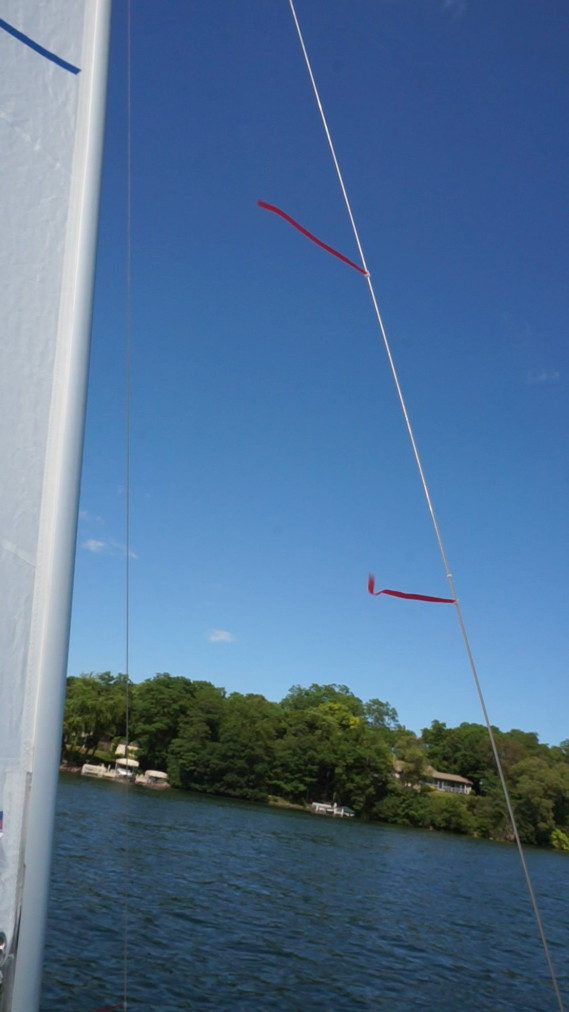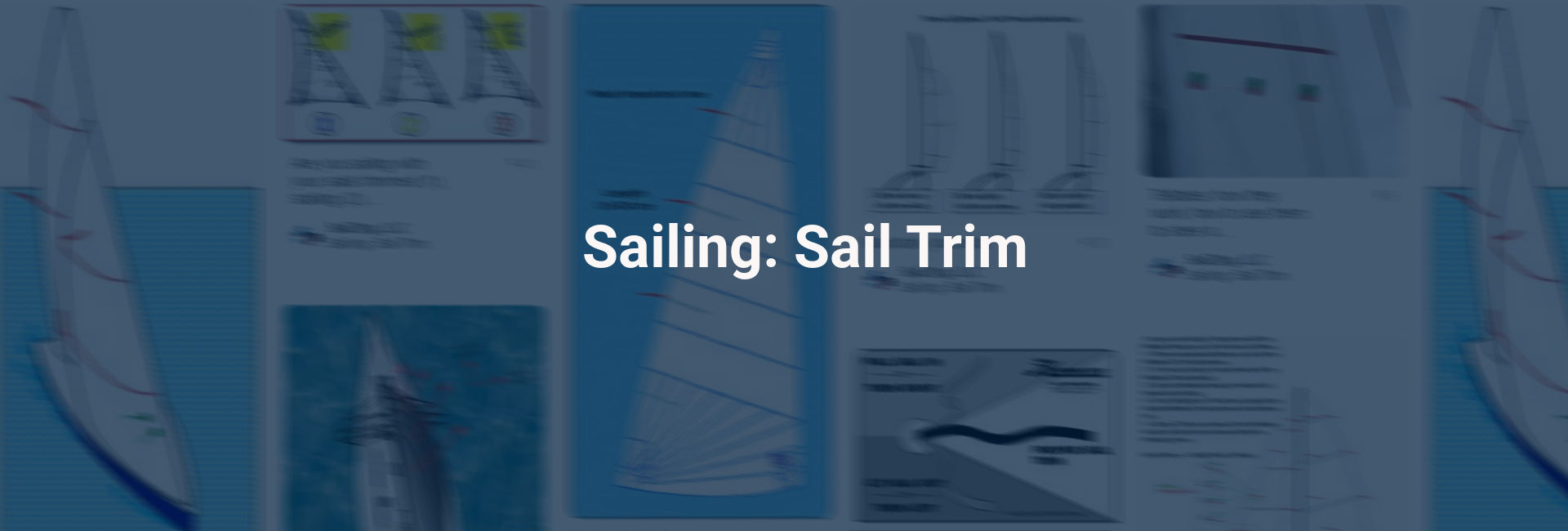As racing sailors, we’re striving to “become one with the wind,” instinctively making use of every little change. If you didn’t grow up sailing, you probably need visual cues to help sharpen those instincts. This article responds to a reader request and shows ten ways to use shroud telltales.
Shroud Telltales and Apparent Wind
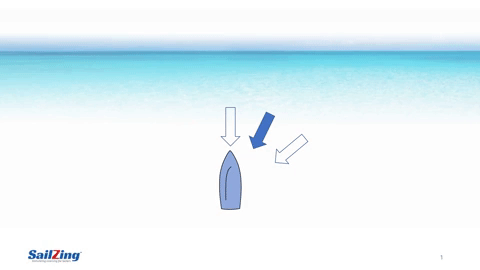
Shroud telltales show you the “apparent wind,” which is the combination of the true wind and the wind generated by the boat’s motion. Changes in either true wind or the boat’s motion affect the apparent wind.
To sail fast, we constantly adjust sail trim and steering to match changes in the apparent wind. Since shroud telltales react almost instantly to apparent wind changes, they’re one of the best visual cues available.
For more on apparent wind, see our post Understanding Apparent Wind: Visual Resources.
Ten Ways to Use Shroud Telltales
#1. Beginners: Get to the approximate heading and sheeting angle quickly
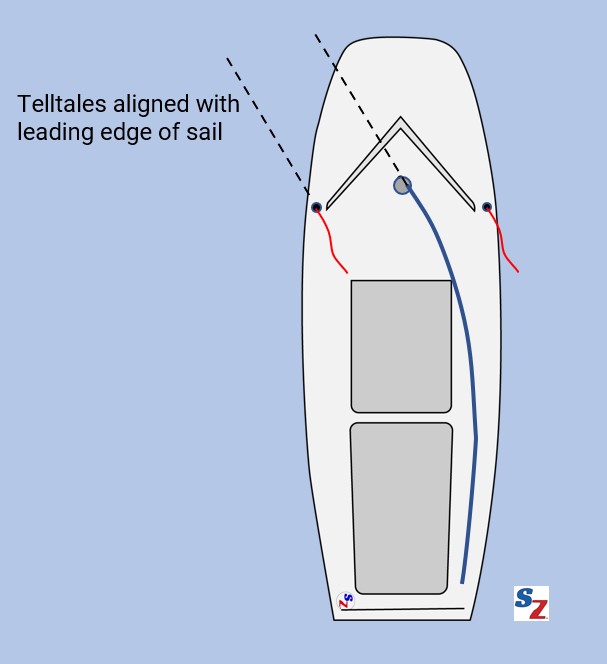
Many beginners have read about the points of sail (close-hauled, reach, run), but initially struggle with wind awareness on the water. In teaching, we encourage beginners to match the leading edge of the sail to the angle of the shroud telltales, so that the leading edge splits the apparent wind evenly. Do this by either by steering or adjusting the mainsheet.
This concept is simple, but it will pay dividends. Experienced sailors become uncomfortable if the telltales are not “right.” For example, as they are bearing off to a reach, they adjust how quickly they ease the main to keep the sail lined up with the telltales. When sailing upwind, they naturally ease the main and/or head up in a lift to match the change in apparent wind.
#2. Recognize when you’re dialed in upwind
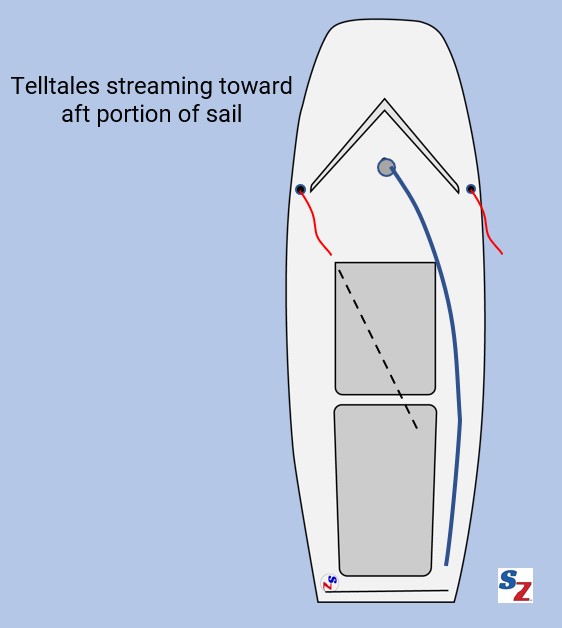
A coach once told me to try to sense how the boat feels on a beat when the telltales are streaming back. He was making two points. 1) If you’re sailing fast and pointing well, your shroud tales will be streaming toward the aft end of the mainsail. If they’re not, you need to look for other clues (sail luffing or stalling) and make an adjustment. 2) Learn to use the telltales to develop your sense of feel. Then you can rely on them less and look around more.
#3 Know where to look for the next puff or lull
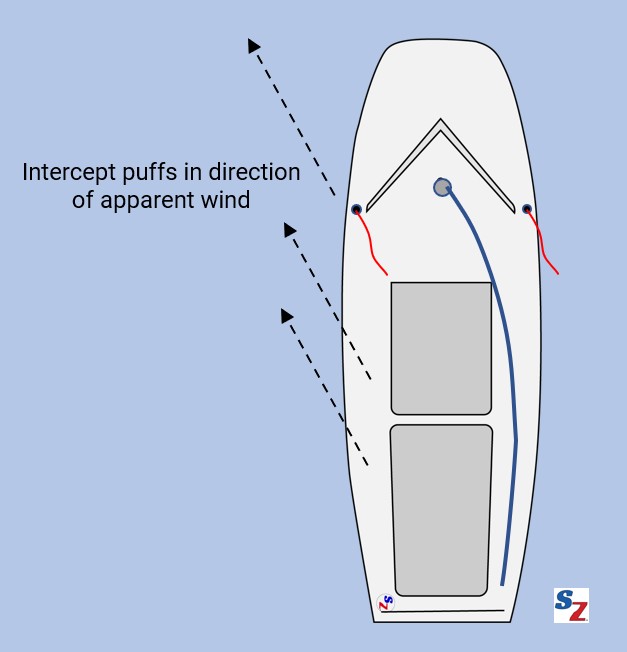
Don’t forget that you will intercept puffs or lulls that lie in the direction of the apparent wind. So, use your shroud telltales to tell you which direction to look. This is true when sailing both upwind and downwind. See our post Downwind Strategy: Use Apparent Wind Clues.
#4. Play the shifts, puffs, and lulls upwind
Bill Draheim reminds us that shroud telltales help us react quickly to shifts. Have a set of telltales slightly above eye level as you look forward. Then learn to interpret changes based on the direction and “droop” of the telltales and the feel of the wind on your body.
- In shifts without a velocity change, the telltales will shift direction without much change in their droop. In a lift, the fastest way to respond is often to ease the sail to match, then trim in and head up as you gain speed. In a header, bear off quickly to match the change.
- In puffs without a wind direction change, the apparent wind will move aft (the telltales will turn in toward the sail). You will feel more wind and the telltales will droop less. Again, ease the sail to match, and head up/trim as you gain speed.
- In lulls without a wind direction change, the apparent wind will move forward (the telltales will point more straight back). You will feel less wind and the telltales will droop more. Resist the temptation to bear off; the boat will coast to a lower speed and the telltales will return to nearly their pre-lull orientation. If the lull persists, you will have to bear off some. Lull response is tricky; for more see our post on Sailing Lulls Tips – Part II.
#5. Play the shifts downwind
Downwind shifts are important, but trickier. See our post on Play the Shifts Downwind for some challenging examples of how to use your shroud telltales downwind.
#6. Work the boat in puffs and lulls downwind
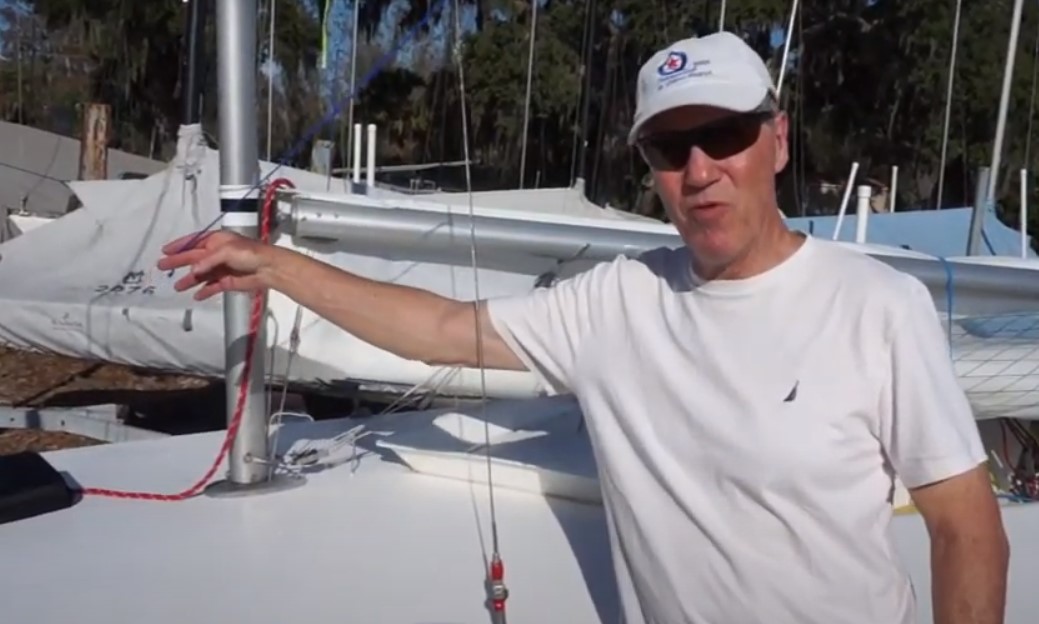
You’ve heard the saying “up in the lulls, down in the puffs.” This is a little too simple – you need to build speed before heading down in the puffs. When a puff hits, see your shroud telltales droop less, giving you a reminder to build speed and head down. When the telltales start to droop again, head back up. For more, see our post on Yarn Telltales.
#7. Avoid dirty air downwind
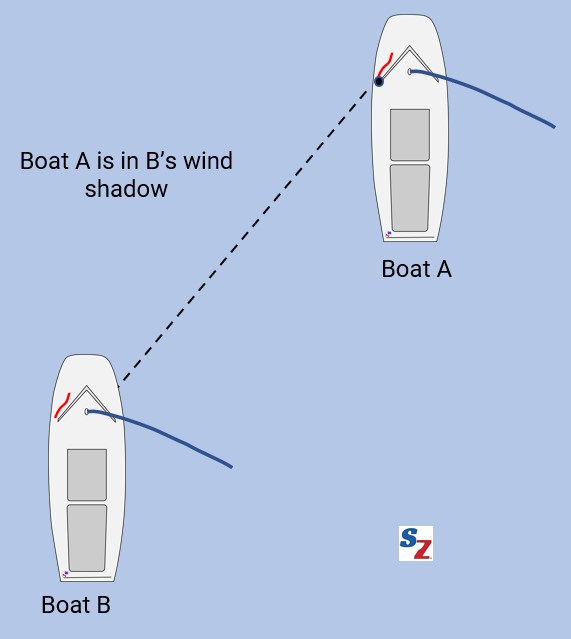
If your telltales are pointing back at a boat behind, you’re in the other boat’s wind shadow. This is bad – do something. See Roble/Shea’s video on downwind tactics at 19:25 for more.
#8. Identify the “favored” gate
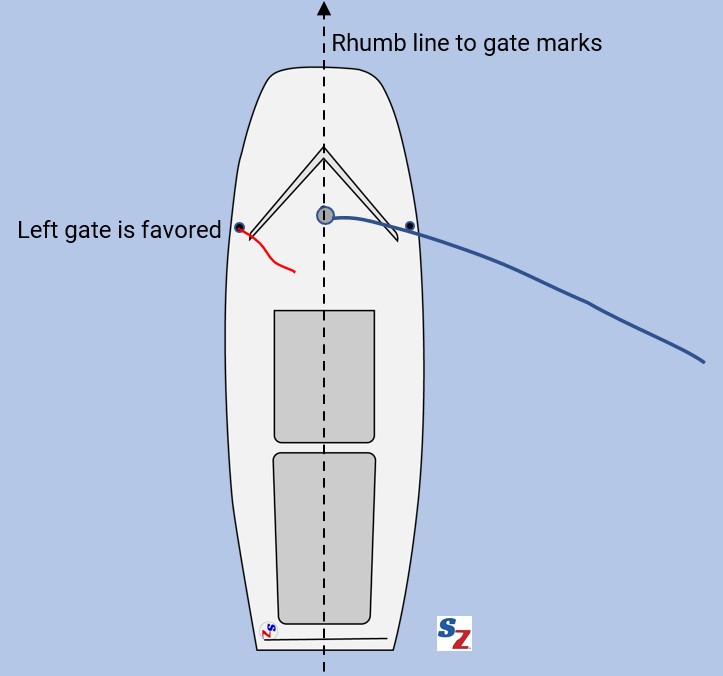
If you’re sailing the rhumb line to the leeward gate, your telltales will indicate if one gate is more upwind than the other. In the diagram, the boat is sailing the rhumb line, which would be directly downwind if the course were square to the wind. Since the telltales are pointing to the left, the left-hand gate is further upwind than the right gate. Therefore, you might choose the left-hand gate, other factors being equal.
#9. Identify the layline downwind
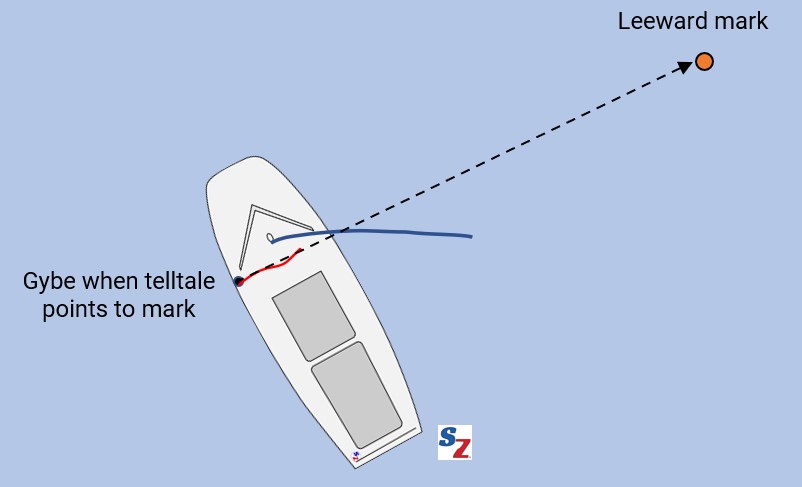
When sailing downwind, you can project the direction of your apparent wind to decide when to gybe for the mark. This becomes important when you’re sailing hotter angles in light air. A mast-head fly is better for this, but you can also use shroud telltales.
See the diagram. In light air, you want to avoid sailing directly downwind. Instead, sail hot and gybe when your telltales point at the mark. This will put you on the same hot angle directly to the mark.
#10. Identify wind shear or gradient
In very light wind, with minimal ripples on the surface, use a set of telltales placed higher on the shrouds. You will likely see different wind speed and direction as you go further up the shroud. A mast-head fly is also great for this condition. For more, see out post on Wind Shear and Gradient.
StayTales: Lightweight, No Tangle Shroud Telltales
SailZing makes highly responsive, no tangle shroud telltales. Click here to learn more.

